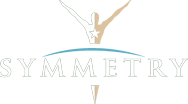Scoliosis and Iliac Crest Elevation: A Symmetry Client Testimonial
One of the most rewarding things about working at Symmetry is hearing our client's success stories and witnessing their journeys of becoming pain-free. Like most of our clients, Symmetry client Michele Henskens came to us in pain. In fact, she had been in pain since she was eighteen. Some thirty-seven years later and after only six months since joining Symmetry, she says she is “virtually pain-free”.
“I do the routine twice a day, I love it. If I ever do feel a little bit of pain, I do the routine. Within the day it’s gone again”. I notice that my posture is great, my clothes fit better. I feel excellent,” says Michelle. “This did for me what yoga and Pilates couldn’t quite access”.
When Michelle first came to us last September, she had scoliosis, a reverse curve in her cervical spine, frozen shoulder, and hip problems. Her postural scores and measurements are modeled in the image below. Michelle had been wearing braces to treat her scoliosis since as young as four years old. Out of sheer curiosity (and an idea of what I would find), I went looking back through Michelle’s postural alignment measurement history. During her first appointment, she had 2 spinal offsets (medium right thoracic offset, slight cervical right offset) constituting scoliosis. However, I found just what I expected in her most recent measurements: for five visits over the course of a couple of months now, Michelle’s spine has been straight with no spinal offsets in the slightest. No objective signs of the scoliosis she had since she was a kid. Most practitioners will treat your scoliosis, your back pain, or where you hurt. But we have to look at the root cause of why you are in pain. Michele’s scoliosis was the result of an elevated left hip (iliac crest elevation). There is no way your spine stays straight on top of a crooked foundation. Through her corrective exercise routines, she was able to align her hips, realign her spine, and get out of pain. No chiropractic adjustments were necessary. In fact, since your muscular system holds and moves your skeletal system, retraining your muscular system is the best and only lasting way to change your alignment.
Now, of course, there is one caveat with our program: if you stop doing your routines, sometimes those old pains start showing their ugly faces again. But as Michelle knows, it’s an easy fix. Michelle says that if she feels her back go out, she does the exercises and it’s “almost like it does a chiropractic adjustment, with popping going all the way down [her] back and it’s centered again, like it does when you are little when you stretch and are flexible.”
There are two types of scoliosis: structural (the kind you are born with) and functional (the kind that develops over the course of your life). Most people have functional scoliosis to some degree, but even if you were born with structural scoliosis, functional scoliosis compounds on top of that from years of further compensation. Whether you were born with scoliosis, or developed it later, addressing the full picture of your alignment can do wonders for treating scoliosis. If you are interested in learning your postural alignment score, if you have scoliosis or why, and what your body needs to get out of pain, you found the right place!
Posterior view of Michelle’s Postural Alignment Score (measurements) at the start of the program.

